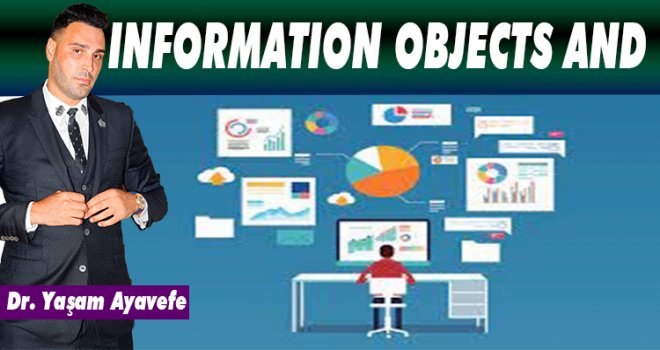INFORMATION OBJECTS AND CATALOGING

Metadata
Users have so far been accustomed to processing pre-filtered documents through the analysis and processing of information professionals. The new data landscape is forcing us to massively rethink these traditional activities to meet a new expectation. Research, collection, compilation are datasets that are contained in large quantities in information silos to reconstruct the content.
This has several consequences:
- Adapting to open formats that enable data exchange and interoperability,
- Working collaboratively to enrich the content as much as possible
- To provide methodological, legal and scientific support to help professionals on the part of institutions
In libraries this is called core business. Unpopular cataloging has been the subject of heated debate for years.
For many colleagues, defining the handbook document by applying the standard remains the core of their professional identity. This is a waypoint in the circuit of the document.
At the same time, it is managed by professionals while protecting the collection. It also enriches it with reliable and structured indexing that will enable it to be discovered by the public.
People are racing to publish a prominent literary innovation. Whatever managers think, it is necessary to try to reduce the workload with less activity. Because cataloging remains a national sport, an elite sport. So, could the library cataloger be the data manager of tomorrow?
A New Approach to Metadata
Cataloging is still done in many libraries. However, this activity tends to diversify and integrate with other processes that involve managing flows.
Digitizing jobs, importing, exporting or transforming data, feeding information systems, negotiating with publishers, rethinking online mediation, etc.
These new processes put metadata management at the center of the business, but in a different light.
Let's just say that in a digital world that is as chaotic as it is competitive, dissemination of structured bibliographic information will be vital. This means that the information-loaded Web will increasingly be sought for the value of trusted data.
There should be a strategic opportunity for libraries today to present their bibliographic information. No doubt with the term in the field and professions will change.
Here we focus on the digital adaptation of catalog professions. We provide an overview of the main changes that led to divergent thinking.
Documentary Information Resources
We are witnessing the triple movement of growth, dematerialization and diversification of documentary information sources. Print editorial production has never been more productive, as the latest legal deposit statistics prove.
More than 72,000 artifacts were stored in 2012. That is 3% more than in 2011. A long-term uptrend confirms this.
At the same time, data may be digital in nature, or may be on the way to digitization. Digital publishing, whether commercial, academic, institutional, legacy or collaborative, continually diversifies and destabilizes bibliographic agencies.
Electronic databases, online magazines and newspapers, e-books, blogs, and downloadable multimedia products are at the center of library turmoil.
Their inflationary costs strain budgets. It houses traditional catalogs in an outdated, global service. It makes it unsuitable to manage such resources where access to resources is required.
The catalog, as an application, is no longer the alpha and omega of the library. It becomes a software brick or a support base, among others.
It must now coexist with other reservoirs and knowledge bases leased from commercial publishers. It must find its place in the architecture of expedition services, which are often kept outside the walls.
These systems deliver articles from electronic periodicals or digital books to the duly accredited end user. It aims to provide as fluid, intuitive and direct access to the primary digital resource as possible.
Finally, there is the problem of reporting new types of resources, hitherto unknown and even commercial publishers do not know how to manage.
For example, it is important how raw research data is managed. There are digital corpuses created by researchers or coveted by digital humanities or even scientists.
The principle of piecemeal cataloging of documents with clearly defined outlines works best when the distributed offer is more like an information ecosystem.
Are the links between resources with details and environmental dimensions as variable as their use?
And how will metadata from manual cataloging coexist with automatic character recognition or semantic indexing processes? These are still a matter of curiosity.
Dr.Yaşam Ayavefe
-
 Arıklı, TEL-SEN’in yeni yönetimini kabulde önemli açıklamalarda bulundu..
Arıklı, TEL-SEN’in yeni yönetimini kabulde önemli açıklamalarda bulundu..
-
 Askerlik (değişiklik) Yasa Önerisi komiteden geçti
Askerlik (değişiklik) Yasa Önerisi komiteden geçti
-
 Üstel, Yuvaya Dönüş Paketini duyurdu: Sosyal konut, bedelli askerlik ve birçok p..
Üstel, Yuvaya Dönüş Paketini duyurdu: Sosyal konut, bedelli askerlik ve birçok p..
-
 Buse Savaşkan Slovenya’da dördüncü
Buse Savaşkan Slovenya’da dördüncü
-
 Zekai Aksakallı, OYAK Yönetim Kurulu Başkanı oldu
Zekai Aksakallı, OYAK Yönetim Kurulu Başkanı oldu
-
 KSTÜ’de Mezuniyet Coşkusu
KSTÜ’de Mezuniyet Coşkusu
-
 Son 1 haftada 27 yangın!
Son 1 haftada 27 yangın!







